When I first drove the 2019 Dodge Challenger SRT Hellcat Redeye, I did so at a media event in Portland, Maine. I spent a few hours driving around rural Maine and New Hampshire as we made our way to Club Motorsports for a few hours of high-speed track time. It was a wonderful day and it did a fine job of showcasing the performance capabilities of the Redeye, but driving a car at a media event on a predetermined route and at a race track doesn’t provide the same feel as daily driving that same car around my local area. With that in mind, I was particularly excited to get the notification that I would be spending a week at my home in Metro Detroit with the Challenger Redeye.
The opportunity to spend a week with a 797-horsepower test car was sure to be fun, but I was interested in seeing how the Redeye really differed from my own Hellcat Challenger. For those who do not know, my personal daily driver is a 2017 Dodge Challenger SRT Hellcat with slightly north of 707 horsepower, so I was able to drive an original Hellcat back-to-back with the Redeye on roads that I know very well.
I found that the Redeye feels very much like the standard Hellcat Challenger in many ways, but there are some distinct differences that jump out at me and it isn’t just a 90-horsepower advantage for the newer car.
My Test Car
The 2019 Dodge Challenger SRT Hellcat Redeye that was delivered to my house was painted Plum Crazy Purple with dual carbon fiber stripes and the optional Widebody package. Like all Redeye models, this Challenger was fitted with the 8-speed automatic transmission, but it also had a handful of options and option packages that add to the comfort and the bottom line.
The Redeye is technically a package on the Hellcat, so my test car had a base price of a standard Hellcat of $58,650. The Redeye package adds $11,000 and the Widebody package adds $6,000, so really, getting into this Redeye would cost closer to $75,000. When you then add in the Plus Package ($1,695), the Alcantara Appearance Package ($1,795), the Driver Convenience Group, the premium Harman Kardon sound system ($1,595) and the other smaller options (black-painted Brembo brake calipers, the Plum Crazy Paint, the stripes and the navigation system), the price as tested of this 797-horsepower Mopar muscle car was $87,975.
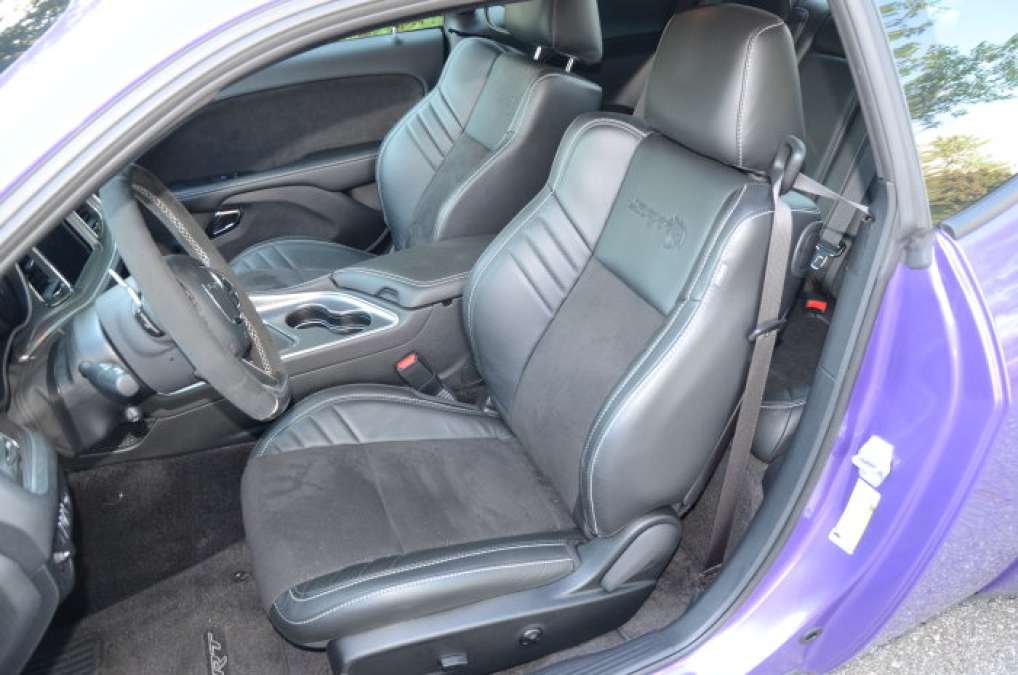
That is a whole lot of money, but this car is nearly loaded, lacking only the fancier leather interior package and the sunroof. My test car also had the 2.62 gears rather than the optional 3.09 gears, but I didn’t miss the steeper gears. At the same time, to get the ultimate Hellcat experience, I would suggest that buyers opt for all of the option packages, as it makes for a great all-around daily driver.
Hitting the Road
My Dodge Challenger SRT Hellcat Redeye test car arrived in the afternoon and I had spent the morning driving my own Hellcat Challenger, so when I climbed into the Redeye and hit the road – I could immediately feel the key differences.
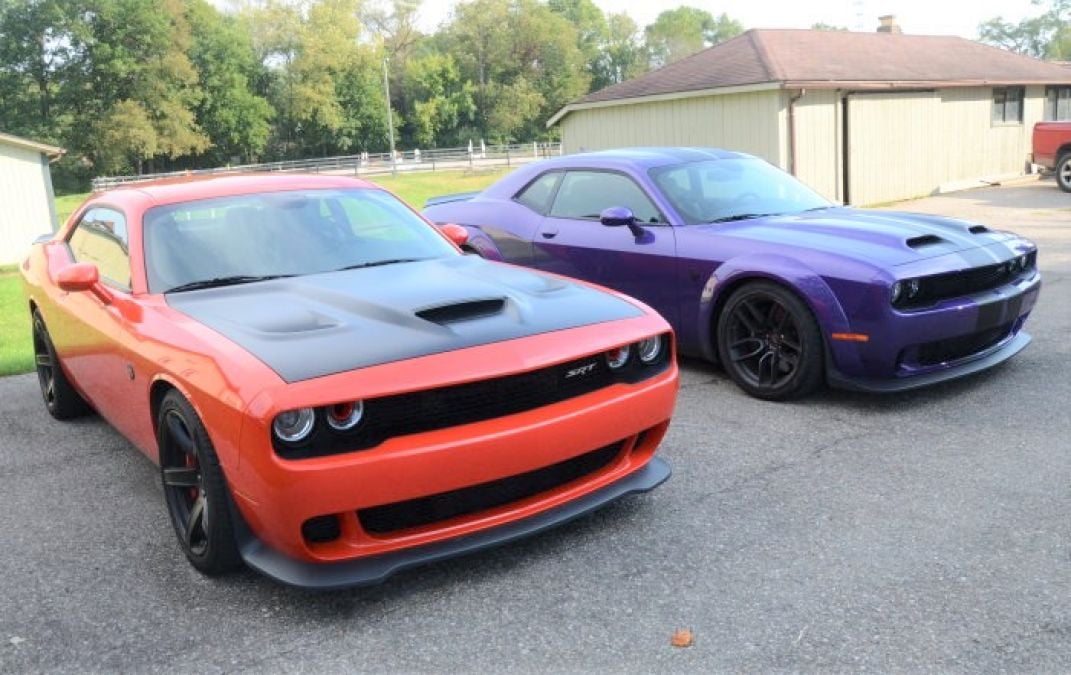
The Redeye, like all Widebody models, has slightly different suspension tuning and that presents a different feel from the non-Widebody cars, including my Hellcat Challenger. Like the standard Hellcat Widebody, the Redeye offers the same ride quality, but there is no question that the wider tires and suspension tweaks allow this car to stick to the road better than my own car. Since my area is comprised of mostly straight roads, it is hard to find a good spot to compare handling, but I find that highway on-ramps provide a great venue to compare handling of two cars in a situation where everyone is expected to accelerate.
In short, I took the Redeye through a series of cloverleaf-style on-ramps that have a decreasing radius, so the turn gets progressively sharper as you need the entry point to the highway. These are on-ramps that I have hammered through with my own Hellcat on many occasions, but I quickly found that I am able to power into these big curves harder while also carrying more speed as I reach the highway. Granted, most people aren’t going to make much use of the ability to enter the highway at 70mph rather than 60mph, but there is no question that the Redeye grips the corners better than my standard Hellcat Challenger.
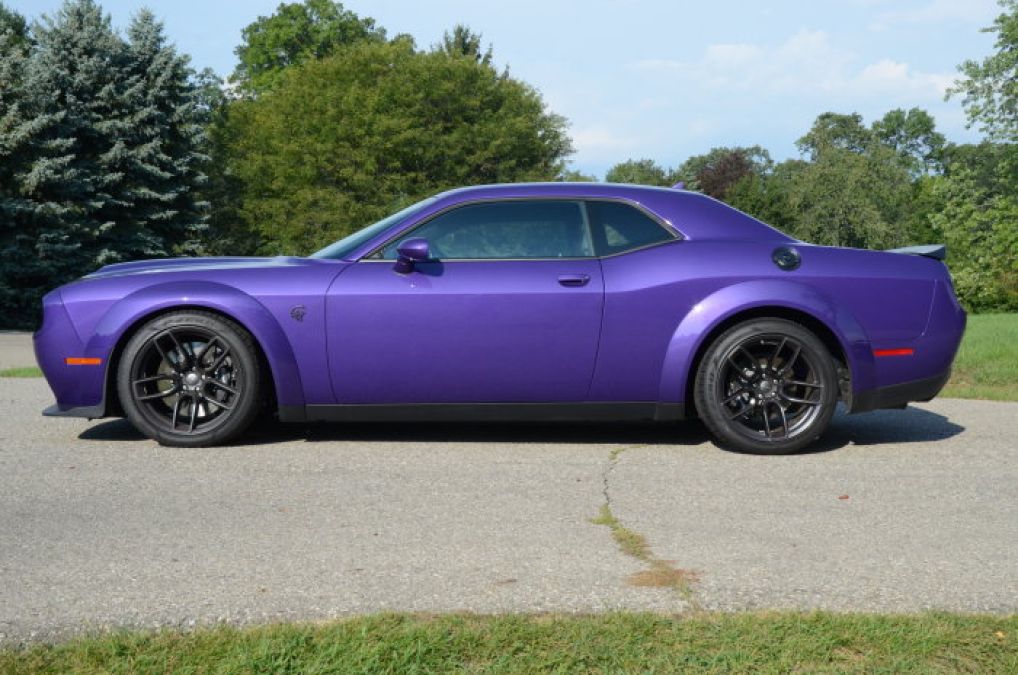
The Redeye also has the electronic power steering system that my car does not, so the steering feel is both different and adjustable. I find that the Track steering setting is the most responsive and the most-alike the hydraulic steering feel in my Challenger, so that is the setting that I prefer. In general, the electronic steering seems to be sharper than the hydraulic system in the earlier Hellcat cars, but it isn’t quite as connected-feeling as the hydraulic system. As a result, I notice a difference from my own car, but those folks who are getting into their first Hellcat with the Redeye are likely to love the control offered by this system.
797 Horsepower
The most obvious difference between the 2019 Dodge Challenger SRT Hellcat Redeye and any of the pre-2019 Hellcat Challengers is power. While both have a supercharged 6.2-liter Hemi, the Redeye relies on the engine from the Demon with a slight tuning change to accommodate the different hood, providing 797 horsepower and 707 lb-ft of torque. Of course, my Hellcat Challenger has 707 horsepower and 650 lb-ft of torque, so the Redeye has 90 more horsepower and 57 lb-ft of torque over my car.
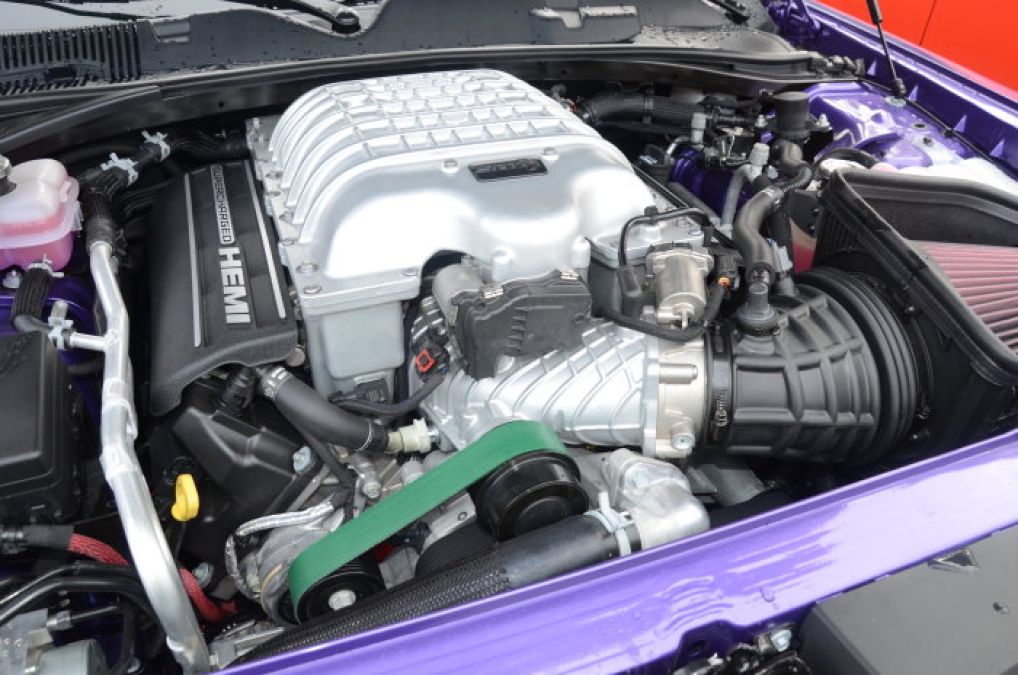
Now, when Dodge first introduced the Redeye, people questions why the official quarter mile times for the 797-horsepower car were the same as the 707-horsepower Challenger Hellcat Widebody with less power and the same tires. I quickly found out that while the Redeye has lots more power, the standard tires make it very hard to use that power on the low end. In other words, the Redeye is very difficult to launch from a stop with the 305mm Pirelli summer tires.
With my own Challenger Hellcat, I am able to get down to the 3.7-second range on a 0-60 dash and with the Widebody Hellcat, I was able to get down to 3.5 seconds. On the other hand, the best that I could muster with the Redeye was 3.8 seconds. To get that, I basically rolled out through first gear and the bottom of second before hammering down, whereas with my own car or other 707-horsepower cars, I am able to climb into the throttle on the top of first gear or at the bottom of second gear. When I tried to use the power of the Redeye sooner, I would just roast the tires, so I can see why Dodge has the same quarter mile times for the Hellcat Widebody and the Redeye Widebody – as the extra power makes the stock car harder to launch. In fact, from a dig on a stretch of private runway, my 707-horsepower Hellcat would hop ahead and the Redeye would reel it in, but I was unable to get out ahead of my Hellcat Challenger right off of the line.
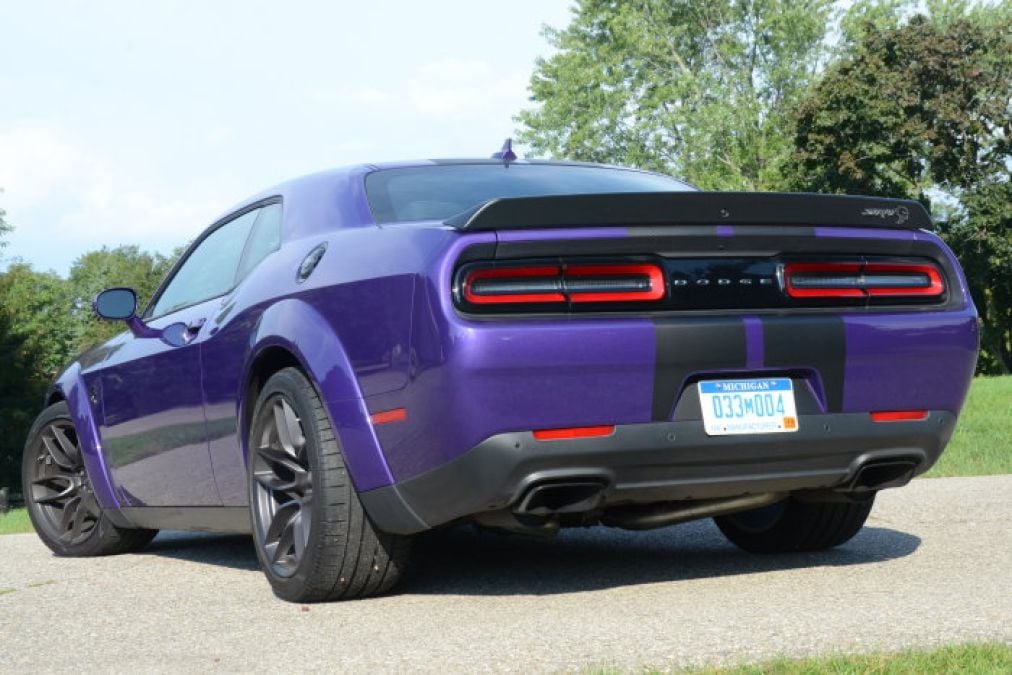
The extra power of the Redeye doesn’t lead to improved stock launches, but it plays a big role in mid-range pull. From a low roll in third gear, the 797-horsepower Challenger accelerates up to triple digits as quickly as any car that I have tested. Actually no matter the speed, putting the accelerator pedal to the floor of the Redeye brings about a pop of power that is unlike anything that I have experienced from anything other than the Dodge Demon. Traction still isn’t guaranteed at higher speeds, but from a roll, the Redeye is a real monster, quickly climbing to speeds that eclipse any posted speed limit in the USA.
Also, in every driving situation with the Redeye, I found that the 8-speed transmission in the 797-horsepower Challenger shifts differently than the similar gearbox in my 707-horseower car. I am unable to actually time the shifts, but there is no question that the Redeye shifts are quicker and crisper than my car or other standard Hellcat cars that I have tested. Under hard throttle, the upshifts are comparably sharp, but there is a distinct difference on upshifts and downshifts with the more-powerful car.
No Track Mode for Daily Driving
When I drive my own Hellcat Challenger around town, I almost always use Track Mode. That offers the stiffest suspension settings, the sharpest shifts, the most-responsive throttle input, the most aggressive engine cooling, the least traction control response and the loudest output from the active exhaust in my car. With the Redeye, Track Mode also offers the track steering setting, but unlike the standard Hellcat, the 797-horsepower model has the intercooler chiller system.
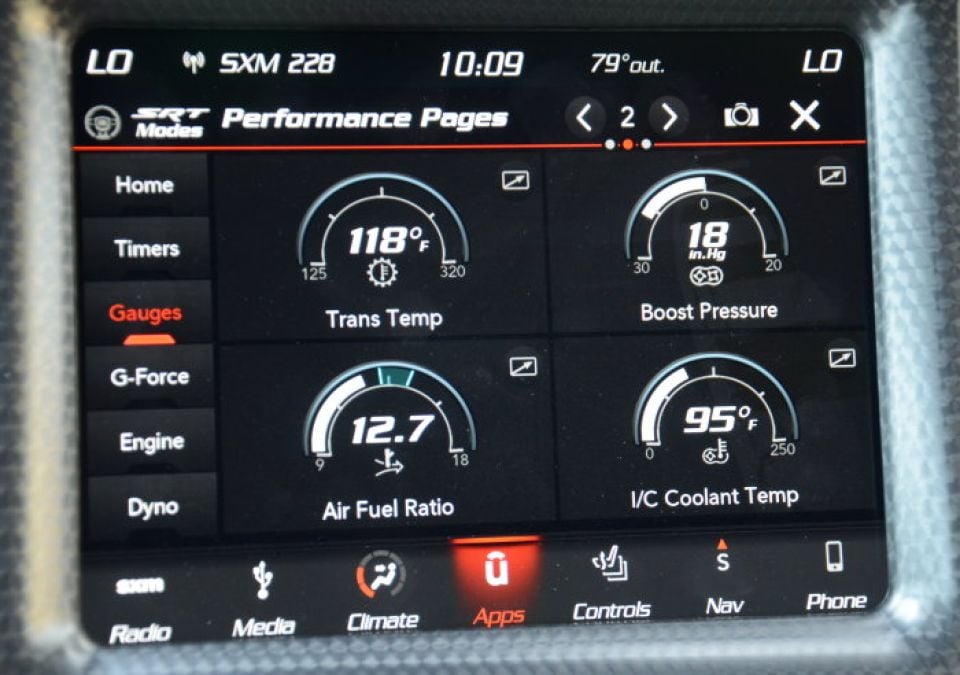
This system uses the cabin air conditioning system to super-cool the intercooler, helping to reduce intake air temperatures. The cooler the intake air, the more power an engine can make, but there is a downside. When you put the Redeye in Track Mode, the intercooler chiller engages and the cabin air is shut off. This allows the engine to run better, but on a 90-degree day in Metro Detroit, it gets incredibly hot in the car. Because of this, it is less than ideal to cruise around in Track Mode on a hot day, but the system works so well that you don’t need a ton of advanced notice to benefit from the chiller system.
On an 85-degree day, the cruising intake air temperature of my Hellcat Challenger is in the range of 115-125 degrees and when cruising in default drive mode, the Redeye was reporting similar temperatures. However, when I switched into Track Mode while cruising, it only took about 10 minutes for the intake air temps to drop below ambient temperatures. In that 85-degree weather, the chiller system got the Redeye IATs down into the mid-90s, but on a day where ambient temperatures were in the mid-60s, the Redeye was breathing in compressed air that was only slightly warmer than the outside air. When the chiller system is at full operation, the intercooler temperatures are generally in the range of 10 degrees (F) below ambient temperatures.
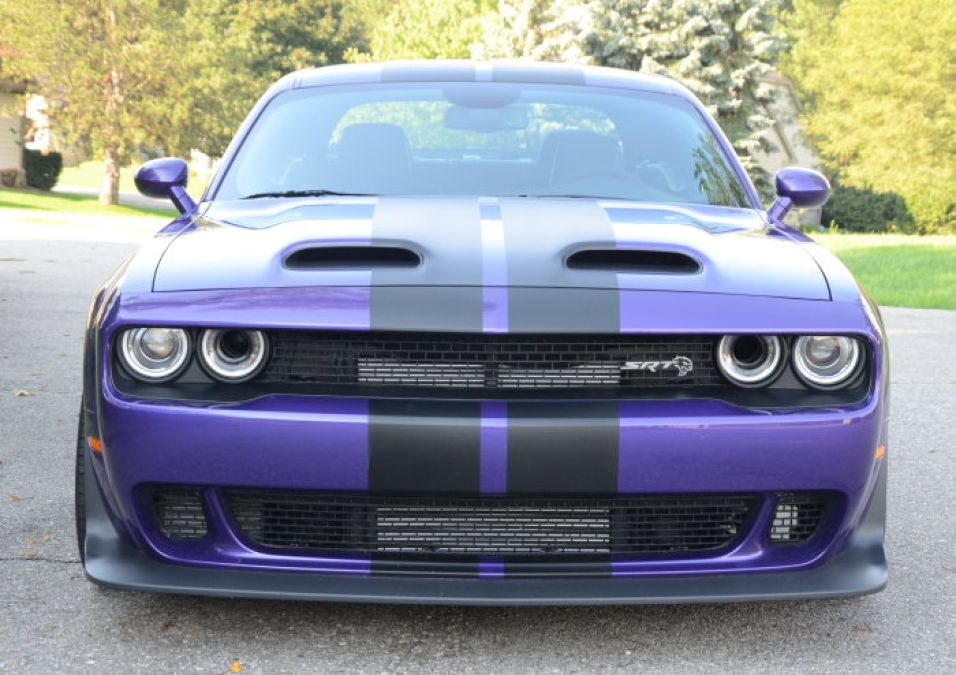
In other words, I don’t expect that many Redeye owners will spend all of their time in Track Mode on hot days, but with a push of a virtual button on the infotainment screen, the Redeye brings the intake air temperature down by 20-30 degrees in a matter of minutes. This is a fantastic feature for those Challenger drivers who want the best possible performance in every condition, but more importantly, with this system, the Redeye will have far lower intake air temperatures than any competitor – so not only is it more powerful than all of the competitors, but it is also not as impacted as badly by hot weather.
The Final Word
At the end of the day, the 2019 Dodge Challenger SRT Hellcat Redeye is about $11,000 more than a standard Hellcat. For that price you get a car that struggles for traction on the low end with the stock tires, but the mid-range and top-end pull is nothing short of remarkable for a factory-stock vehicle. When you factor in the line lock system, torque reserve and the other go-fast features, the Redeye is a far better choice for a Challenger owner who wants to spend lots of time at the drag strip, but in terms of daily driving – the Redeye offers some unmistakable advantages over the earlier Hellcat cars.
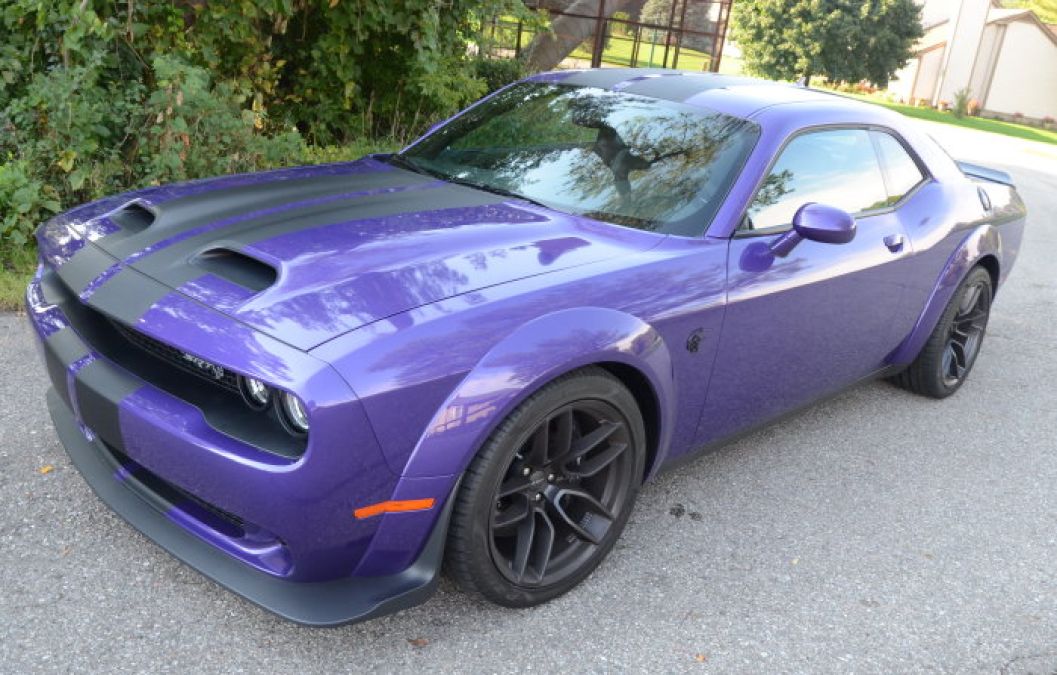
In the end, driving the most powerful American production road car of all time is as much fun as you would expect, but like the rest of the Dodge Challenger SRT Hellcat cars, the Redeye offers all of the comforts that you need for daily driving while also being able to easily outrun almost anything that lines up next to it on the road.


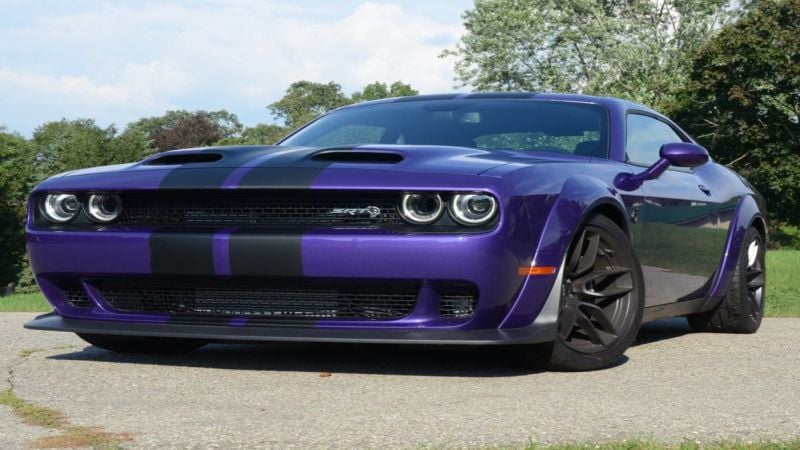










Comments
Thanks for the review. it is
Permalink
Thanks for the review. it is especially valuable because of the comparisons to your own Hellcat which put the Redeye package into perspective.
Great article. Thanks to
Permalink
Great article. Thanks to Patrick Rall and to FCA for "lending" a Redeye for this. I have a Redeye on order and even the dealer cannot fully explane that chiller system. Your explanations and descriptive text offer a great inside view to what may be the last great Muscle car of our time. Its a great day we live in with the Muscle car war is it its peak. Or has it not peaked??. I've lived and driven Muscle cars all my life. Been through the first go around in the late 60's-early 70's. Owned a huge custom and restoration shop for 30 years. I'm retired now but I've built, raced and driven daily some very fast cars. This new breed of American Muscle is nothing short of Incredible. One has to wonder how long this will last and how far will the OE's go with the outrageous horsepower and all around performance they are building for us. All I know is I'm loving it !
Thank you for the article Patrick.